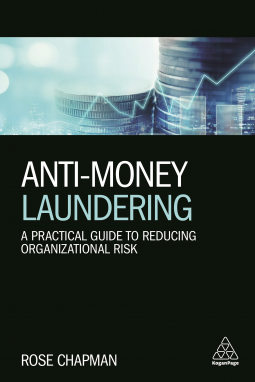
Anti-Money Laundering
A Practical Guide to Reducing Organizational Risk
by Rose Chapman
This title was previously available on NetGalley and is now archived.
Send NetGalley books directly to your Kindle or Kindle app
1
To read on a Kindle or Kindle app, please add kindle@netgalley.com as an approved email address to receive files in your Amazon account. Click here for step-by-step instructions.
2
Also find your Kindle email address within your Amazon account, and enter it here.
Pub Date May 03 2018 | Archive Date Jun 15 2018
Kogan Page Ltd | Kogan Page
Talking about this book? Use #AntimoneyLaundering #NetGalley. More hashtag tips!
Description
It is estimated that between 2 and 5 per cent of global GDP (over $3 trillion) is laundered by criminals around the world every year.
Once thought to be a problem which only affected banks and the financial services sector, high profile cases, such as the recent leak of the Panama Papers in 2016, have thrust the issue into the public arena, and governments around the world are being forced to put robust systems and controls in place. Anti-Money Laundering offers a cost-effective self-development tool for the busy compliance professional eager to progress their career and in need of an accessible, practical and jargon-free introduction to anti-money laundering (AML).
Anti-Money Laundering offers a practical guide to navigate the maze of requirements needed to counter money laundering in an organization. This book separates the different elements of AML practice, featuring a range of case studies and scenarios highlighting issues and best practices around the world. The text demonstrates that it is by foresight and methodology that AML can be mitigated, and provides clarity on complex points to better enable readers to gain the expertise they need to achieve success in practice.
Available Editions
| EDITION | Other Format |
| ISBN | 9780749481896 |
| PRICE | $52.00 (USD) |
| PAGES | 200 |
Featured Reviews
 Reviewer 153322
Reviewer 153322
This is a good handbook, meant for British businesses, to help them develop policies and procedures that will allow them to identify patterns of money laundering and collusion with crime. The EU law is exceptionally broad, characterizing as money laundering *any* use of a good procured illegally (so eating a shoplifted candy bar is "laundering" the proceeds of a crime, in its way), so the case studies range from private bankers taking briefcases of cash to offshore institutions to drug addicted line employees stealing products off the shop floor and selling them. The interesting element here is that, no matter the laws in place that attempt to control it, money laundering is most often caught in businesses where the culture is to treat people well, reward whistleblowers and empower low-level employees.
 Reviewer 419443
Reviewer 419443
This book taught me quite a bit about AML. It was well worded and simple to understand.
 Paul M, Reviewer
Paul M, Reviewer
Each year for work (I work in a large financial services firm) I have to take the anti-money laundering training. If you think of money laundering as a mobster carrying around bags of cash, your view is too limited. That can be money laundering, but in this electronic, global age, the scope and possibilities of money laundering have expanded. Corporate compliance expert Rose Chapman has written Anti-Money Laundering: A Practical Guide to Reducing Organizational Risk to help people like me, and, even more, people who supervise my company's business, to navigate the complex requirements of anti-money laundering compliance.
The highlight for me is the case studies. As with any abstract principle of law, seeing it in application makes understanding it easier, as well as helping the reader grasp the implications of AML regulations. A major theme is training and educating employees and keeping good records. As one case study makes clear, as long as training has been demonstrably implemented, if an employee abuses his or her position to launder money, the firm is not held liable, only the individual employee. This spotlights the importance of those training sessions I have to listen to each year.
Chapman says she is writing for "emerging AML professionals at all levels of an organization." If you are there, in a supervisory role or in a role that touches on AML, Anti-Money Laundering will give you a helpful introduction and guide to this increasingly complex area of business.
Thanks to NetGalley and the publisher for the complimentary electronic review copy!





